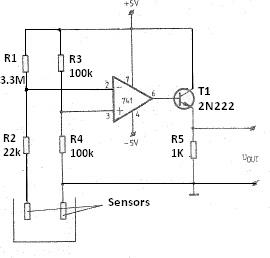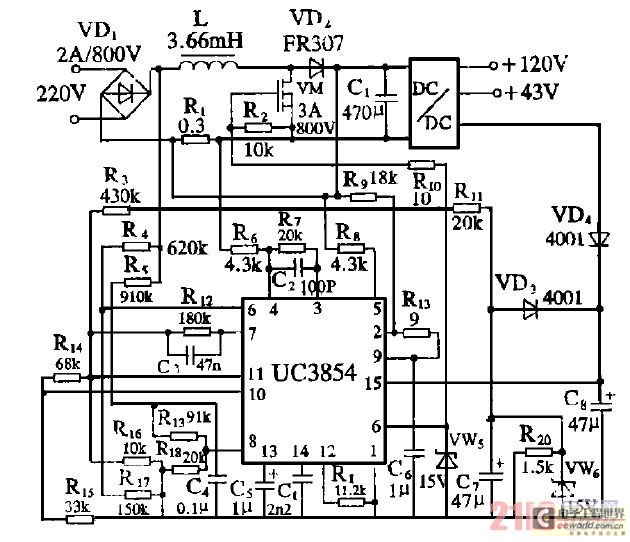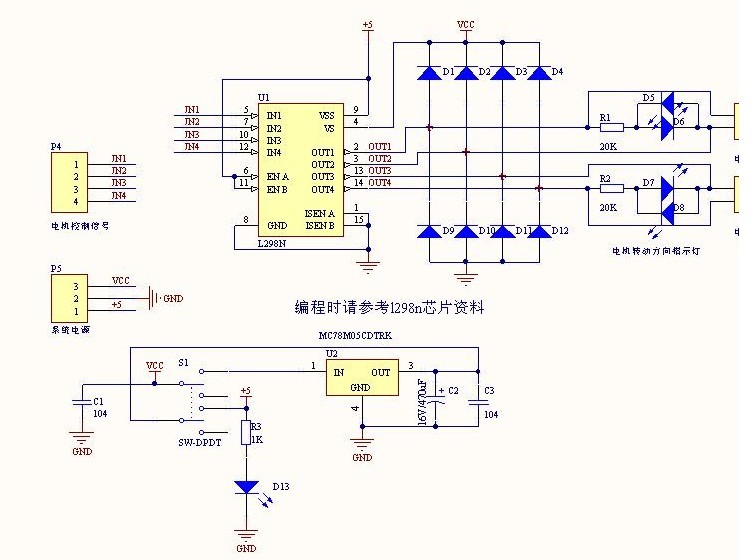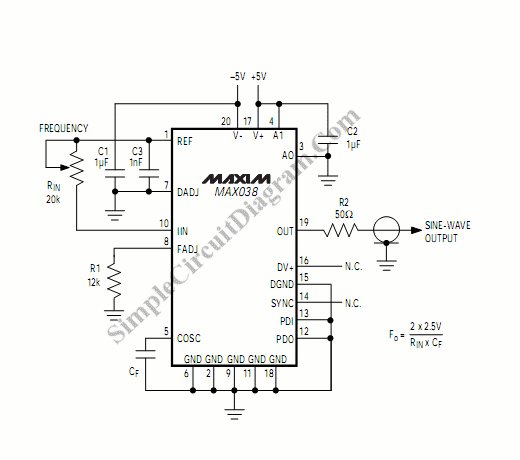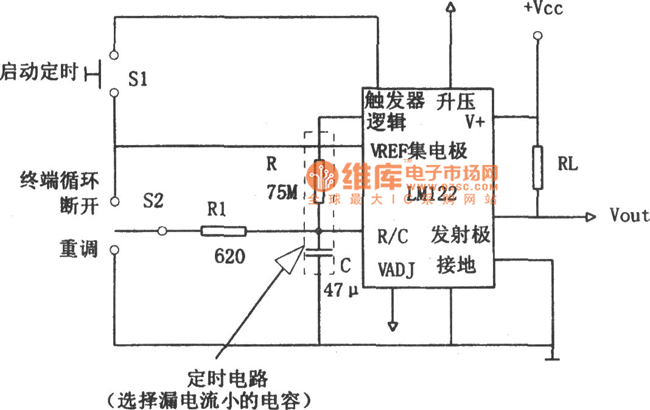
AVR High Voltage Programmer Using Arduino
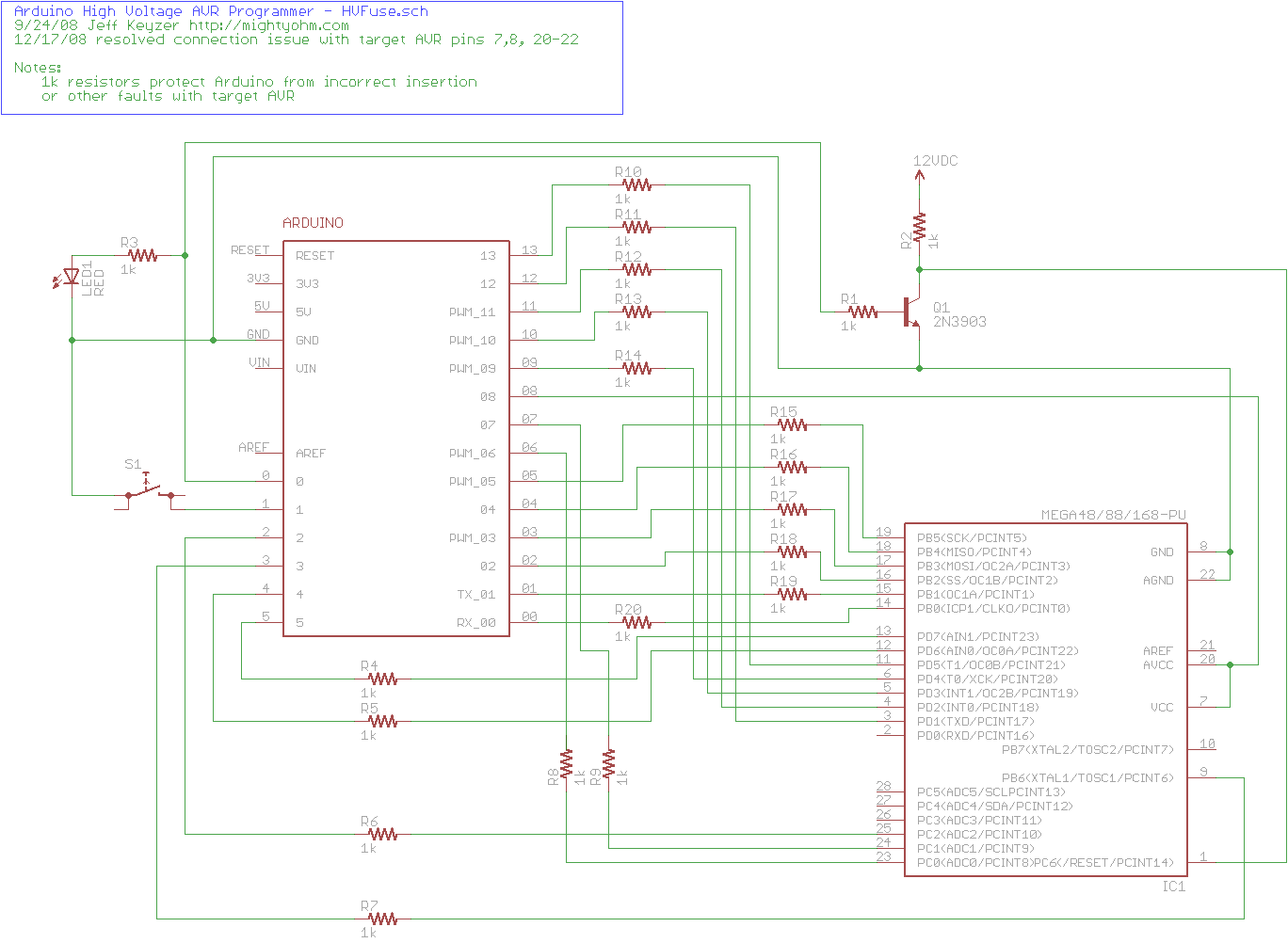
The project explains how to create a simple AVR High Voltage Programmer using Arduino. It can be utilized to fix or recover incorrectly fused AVR chips.
The AVR High Voltage Programmer is designed to reprogram AVR microcontrollers that have been inadvertently locked due to incorrect fuse settings. This project employs an Arduino board to deliver the necessary high voltage programming sequence, allowing for the recovery of the microcontroller.
The circuit typically consists of an Arduino, a high voltage generator circuit, and connections to the target AVR microcontroller. The Arduino generates a specific sequence of pulses that apply high voltage to the reset pin of the AVR chip, effectively overriding the fuse settings that have locked the chip.
Key components of the circuit include:
1. **Arduino Board**: Acts as the control unit to generate the required programming signals.
2. **High Voltage Generator**: This can be constructed using components such as a transformer or a charge pump circuit to achieve the necessary voltage levels (often around 12-15V).
3. **Resistors and Capacitors**: These components are used to form timing circuits and to stabilize the voltage levels.
4. **Connecting Wires**: For interfacing the programmer with the target AVR microcontroller.
The programming process involves connecting the high voltage programmer to the target AVR chip, ensuring correct orientation and pin connections. The Arduino is then programmed with a sketch that outlines the timing and voltage levels required for the high voltage programming sequence. Once executed, the Arduino sends the high voltage pulses to the reset pin, allowing the microcontroller to be reprogrammed.
This AVR High Voltage Programmer is an invaluable tool for developers and hobbyists working with AVR microcontrollers, providing a means to recover devices that may otherwise be rendered unusable due to incorrect fuse settings.The project explains how to make simple AVR High Voltage Programmer using Arduino. It can be used to fix/recovery wrong fused AVR chip.. 🔗 External reference
The AVR High Voltage Programmer is designed to reprogram AVR microcontrollers that have been inadvertently locked due to incorrect fuse settings. This project employs an Arduino board to deliver the necessary high voltage programming sequence, allowing for the recovery of the microcontroller.
The circuit typically consists of an Arduino, a high voltage generator circuit, and connections to the target AVR microcontroller. The Arduino generates a specific sequence of pulses that apply high voltage to the reset pin of the AVR chip, effectively overriding the fuse settings that have locked the chip.
Key components of the circuit include:
1. **Arduino Board**: Acts as the control unit to generate the required programming signals.
2. **High Voltage Generator**: This can be constructed using components such as a transformer or a charge pump circuit to achieve the necessary voltage levels (often around 12-15V).
3. **Resistors and Capacitors**: These components are used to form timing circuits and to stabilize the voltage levels.
4. **Connecting Wires**: For interfacing the programmer with the target AVR microcontroller.
The programming process involves connecting the high voltage programmer to the target AVR chip, ensuring correct orientation and pin connections. The Arduino is then programmed with a sketch that outlines the timing and voltage levels required for the high voltage programming sequence. Once executed, the Arduino sends the high voltage pulses to the reset pin, allowing the microcontroller to be reprogrammed.
This AVR High Voltage Programmer is an invaluable tool for developers and hobbyists working with AVR microcontrollers, providing a means to recover devices that may otherwise be rendered unusable due to incorrect fuse settings.The project explains how to make simple AVR High Voltage Programmer using Arduino. It can be used to fix/recovery wrong fused AVR chip.. 🔗 External reference
